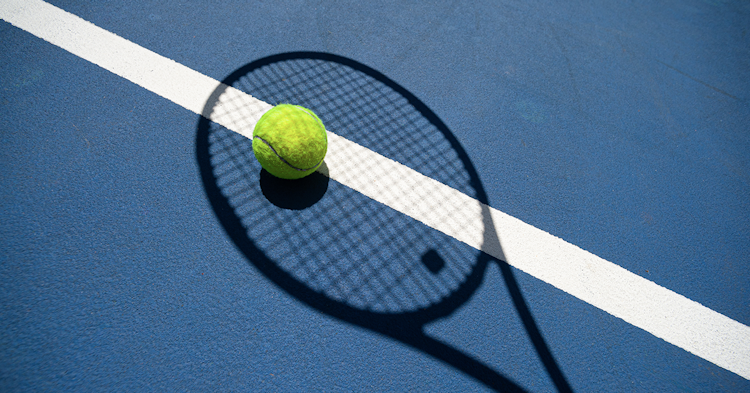5 Outsiders Who Could Crash The 2022 Men’s Australian Open
Last updated: Jan 17, 2022, 10:39PM | Published: Jan 17, 2022, 12:51AM
With Novak Djokovic out of this year's Australian Open, the path to glory in Melbourne is now wide open.
With the 9-time winner absent, this tournament seems ripe for an outsider to triumph yet we first need to spend a little time on the definition of an “outsider” before investigating which darkhorse-style players could surprise in Melbourne over the next fortnight.
Let’s start there: What IS an outsider, as defined for this article? I’ll put it this way: The player involved cannot have a major final appearance to his credit.
So: Alexander Zverev is not an outsider. Stefanos Tsitsipas is not an outsider. Matteo Berrettini is not an outsider. They reside in the top tier of challengers to Novak Djokovic (if he plays) and Daniil Medvedev, the U.S. Open champion and top-two hardcourt player in the world and who met Djokovic in last year’s Australian Open final.
So, let’s look at the credentials of some players who can be viewed as outsiders, driving at the question of who's best placed to go all the way in the coming fortnight.
RELATED: Check out all of Stats Insider's 2022 AO tournament projections
DENIS SHAPOVALOV
Of any player who can reasonably be viewed as an “outsider,” Shapovalov is the one who most comfortably and easily makes the shortlist of contenders.
'Shapo' has another year under his belt, and he made real forward strides in 2021 to justify his presence as a legitimate threat. He made the Wimbledon semifinals and pushed Djokovic. He faltered in late-set scoreboard situations but put himself in position to win those sets. He simply couldn’t close the sale. He's not that far off from making a breakthrough, though it also has to be said that the Canadian needs to continue to make major semifinals before his odds of reaching a major final improve. If you put him against Djokovic, Medvedev, Zverev, Tsitsipas, and (if he gets healthy) Dominic Thiem, he would not be favoured. Yet, he's tasted what it’s like to make the second week of a major and much like compatriot Felix Auger-Aliassime, he's begun to give himself the crucial kinds of experiences young players need to absorb and learn from before they take the next step.
Shapovalov making a deep run at a major seems much more realistic now than it did 12 months ago.
HUBERT HURKACZ
Hubie Hurkacz has the game to threaten elite players.
We saw him beat Medvedev and Roger Federer at Wimbledon last year and reach the semifinals, building on his Miami championship. Hurkacz slumped on clay last year, but made a few deep runs in big tournaments and left no doubt that he's knocking on the door of bigger achievements in men’s tennis.
Hurkacz has possessed the raw talent to become an imposing presence on tour, but last year he began to manage matches and situations a lot better. He was awed and overwhelmed at the start of his Wimbledon semifinal against Berrettini, but he found his sea legs in the third set and battled back to make that match a contest. It was a microcosm of his last two years: He got knocked around in 2020 and fought back in 2021. This “school of hard knocks” progression is a positive development for a young player and can help form his larger plan of development.
Hurkacz showed in 2021 that he could indeed learn from his struggles. That’s why he looms as a genuinely dangerous player in Melbourne.
ASLAN KARATSEV
Karatsev, a lurker on the Challenger Tour with relatively little ATP Tour experience, came out of nowhere to make the semifinals last year in Melbourne. This year, the Russian will be a target, and for that reason alone, the idea that he'll make another run to the semifinals isn’t something you'd want to bet on.
However, Karatsev – who got punched in the mouth by the tour in the middle of 2021 after his brilliant start in the first half of the season – won some big late-season matches and showed that he wasn’t going to fade away from the scene. Accumulated wisdom on tour, plus the ability to refresh after the grind of competition wore him down in 2021, should put him in a good frame of mind entering this tournament. The problem for him is that his opponents will have a much better game plan when they take the court against him, but Karatsev has the tennis IQ and the comportment to solve problems.
DIEGO SCHWARTZMAN
Though not a frontline contender for the championship at this tournament, Schwartzman has to be taken seriously. He doesn’t have the huge serve which can rescue him in difficult moments, and not being taller robs him of the natural physical advantages enjoyed by players such as Medvedev, Hurkacz, and Djokovic. Yet, for all of his evident limitations, we know what makes Diego special: He competes better than most of his peers.
If you have seen any of Schwartzman’s major-tournament battles against Rafael Nadal, you know why he commands respect on tour and is a tough out on many occasions.
The Argentinean might lose based on the limitations of his serve, but he doesn’t lose the inner game of tennis, as the author Timothy Gallwey alluded to in a seminal 1974 book on tennis (and sports) psychology. Schwartzman does not get intimidated. He doesn’t cede territory in the mental battle which is so central to a solo-athlete sport. Having reached the semifinal round at majors, Schwartzman could become the latest example of what we have seen over the past decade with Stan Wawrinka, Kevin Anderson, and others: a guy who requires a long time to make a first major final, but who finally does reach that stage of achievement due to persistence in honing one’s skills.
FELIX AUGER-ALIASSIME
Felix’s progression in 2021 was undeniable. He reached the quarterfinals of Wimbledon and the semifinals of the U.S. Open, raising hopes that Canada could soon have a major singles champion in this golden era of Canadian tennis.
The cautionary note about Felix is that his deep runs occurred in particular sets of circumstances. His Wimbledon quarterfinal run came thanks to a fourth-round win over the bad version of Alexander Zverev. Full credit to Felix for finding his way through that match, but Zverev was not just mediocre. The German was poor. The version of Zverev which made the U.S. Open semifinals a few months later would have handled Felix relatively easily. Of course, that’s not how tennis or sports work; you play a particular opponent on a given day. Nevertheless, the importance of that point is simply to illustrate that Felix’s rise in the latter half of 2021 was partly built on the reality that his opponents didn’t play well. The next step for Felix is to beat a top-tier opponent when that player is playing well.
What should give Felix confidence heading into Australia is that he has built some sweat equity at majors, something he lacked a year ago. His journey parallels the path carved out by fellow Canadian Denis Shapovalov. It will be fascinating to see how Felix and Shapo compare – not just in this tournament, but throughout 2022.
Did you enjoy this article? Join our free mailing list to get the best content delivered straight to your inbox, or join the conversation by leaving a comment below or on the Stats Insider Twitter or Facebook page.




